Weeknote 15/09/25
Insect stand and dome printing
This week we’ve mostly been working on manufacturing our dome and turntable – Anna printed some parts of the dome and configured the lighting, whilst Bea and Arissa got access to the computer lab printers to print all the smaller parts, since the beds of those printers are slightly smaller than that of the Bambu Lab A1. Fortunately, Sam also helped us with printing one of the dome parts, which sped up the process, so we completed half of the dome (4 pieces) in time for our presentation on Thursday. We worked on printing a stand with an adjustable height for the specimens to be displayed on, as well as discussing laser cutting the turntable’s disc (since it would have too wide a diameter to be printed in one piece) with the hardware lab’s manager, Thomas.
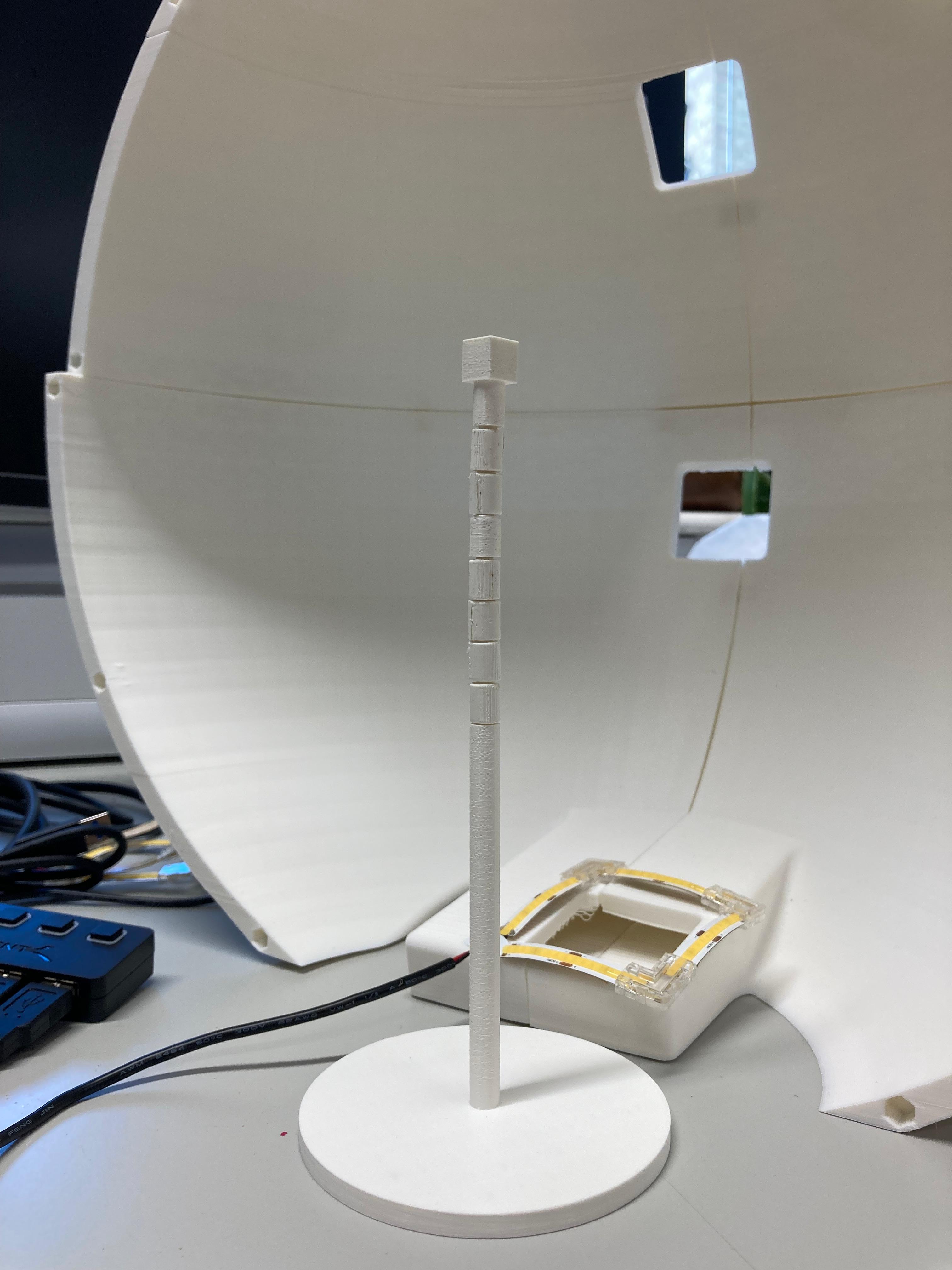
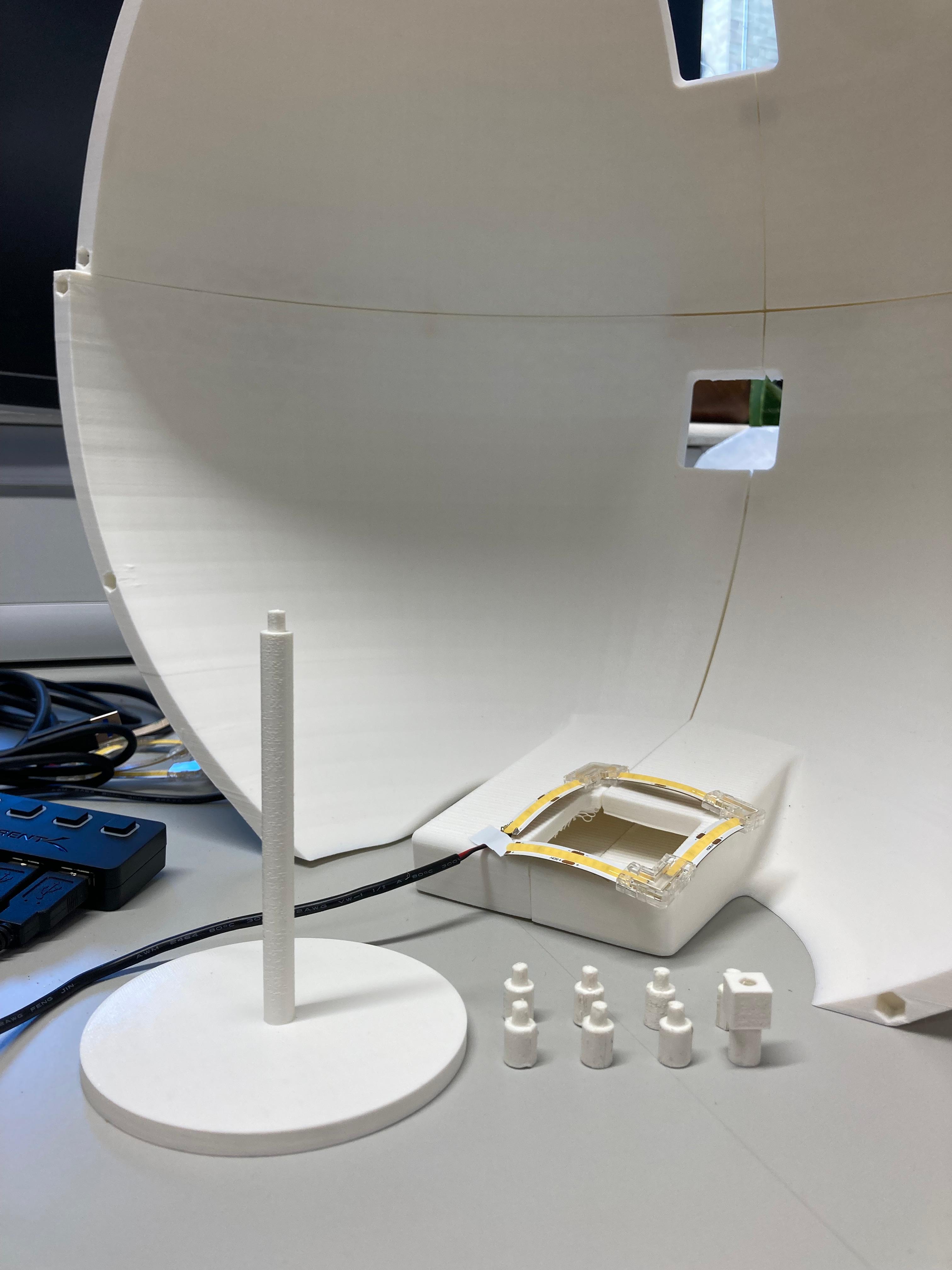
Assembling LED lighting
We purchased the LED light components – USB connectors, LED strip, L-shaped hippo connectors, USB hub, and cable tape. Each of the 4 USB connectors was soldered onto a 5cm LED strip, which formed a square with 3 other strips using L-shaped hippo connectors. These can be plugged into a USB hub that allows them to be switched on/off individually. The components did not adhere well to the interior surface of the dome, so we have ordered nano tape and will try using that when it is delivered.
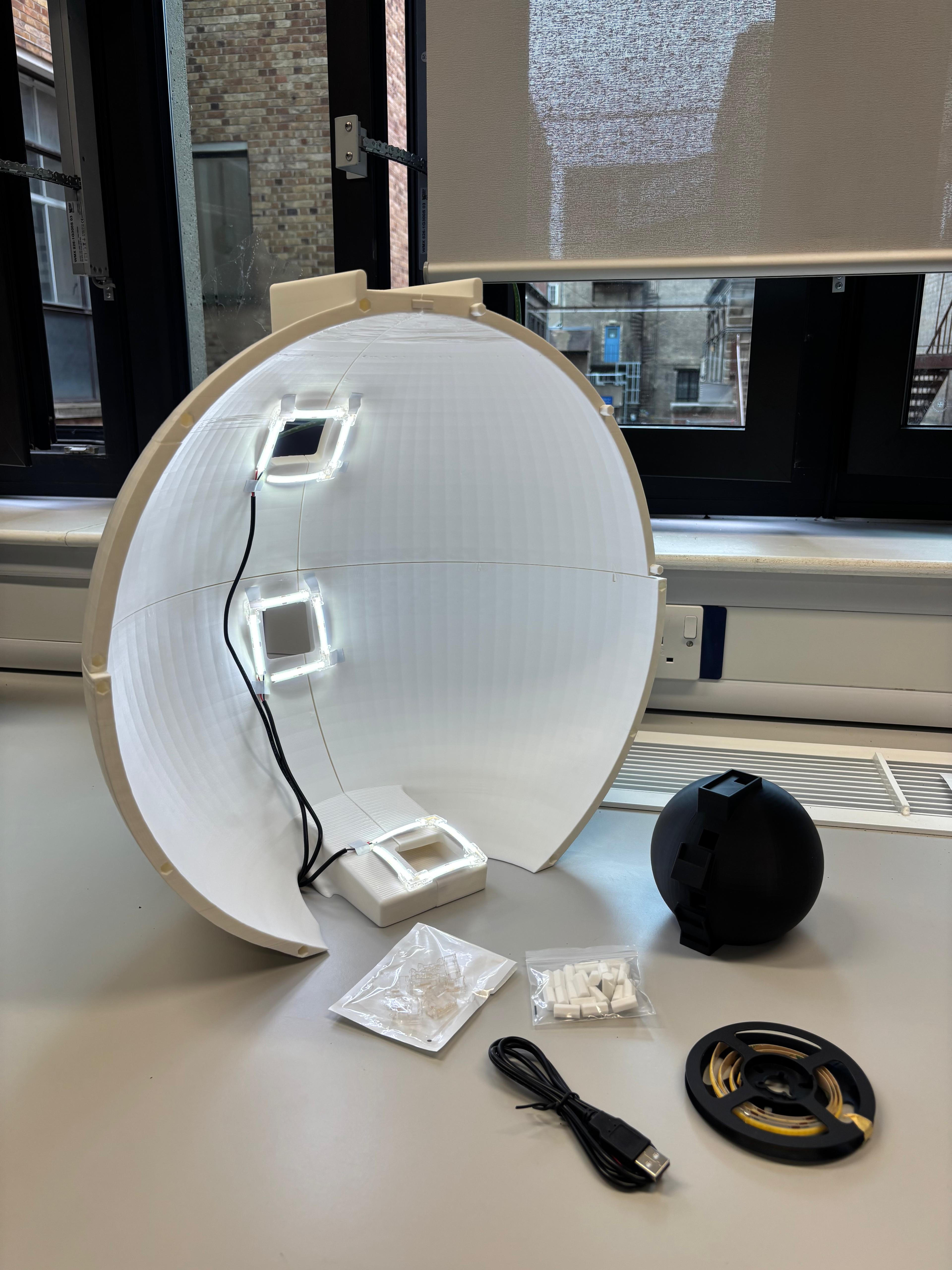
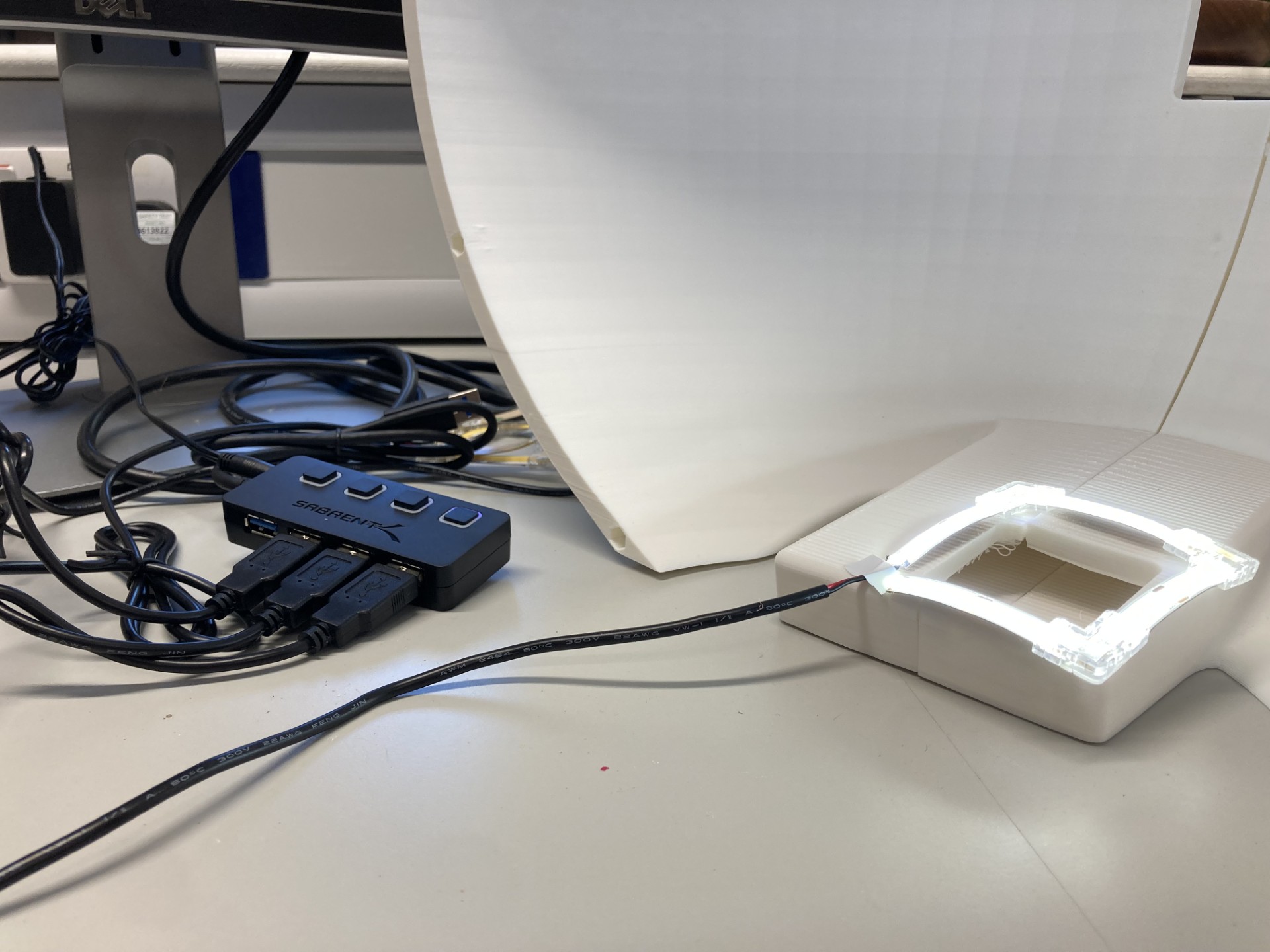
Thursday meeting
At the lab lunch meeting on Thursday, we presented our progress on the project so far, describing the solution we have devised and the work we have done so far, as well as the intentions behind it. This was well-received by the audience, including a visiting researcher, Ignasi (Nacho) Bartomeus from Spain who also works extensively with museum collections.
Dr Bartomeus also gave a presentation about his work on Spanish farms investigating population trends among pollinators.
Insect corner
Insect fact of the week 1: Caterpillars have 12 eyes, but can only sense light and dark and can't distinguish shapes or colours.
Insect fact of the week 2: The Atlas moth, of Southeast Asia, is considered the largest in the world and has a wingspan of nearly 30 cm.
Insect fact of the week 3: Male giraffe weevils use their long necks to make nests and fight each other. Image by Frank Vassen.
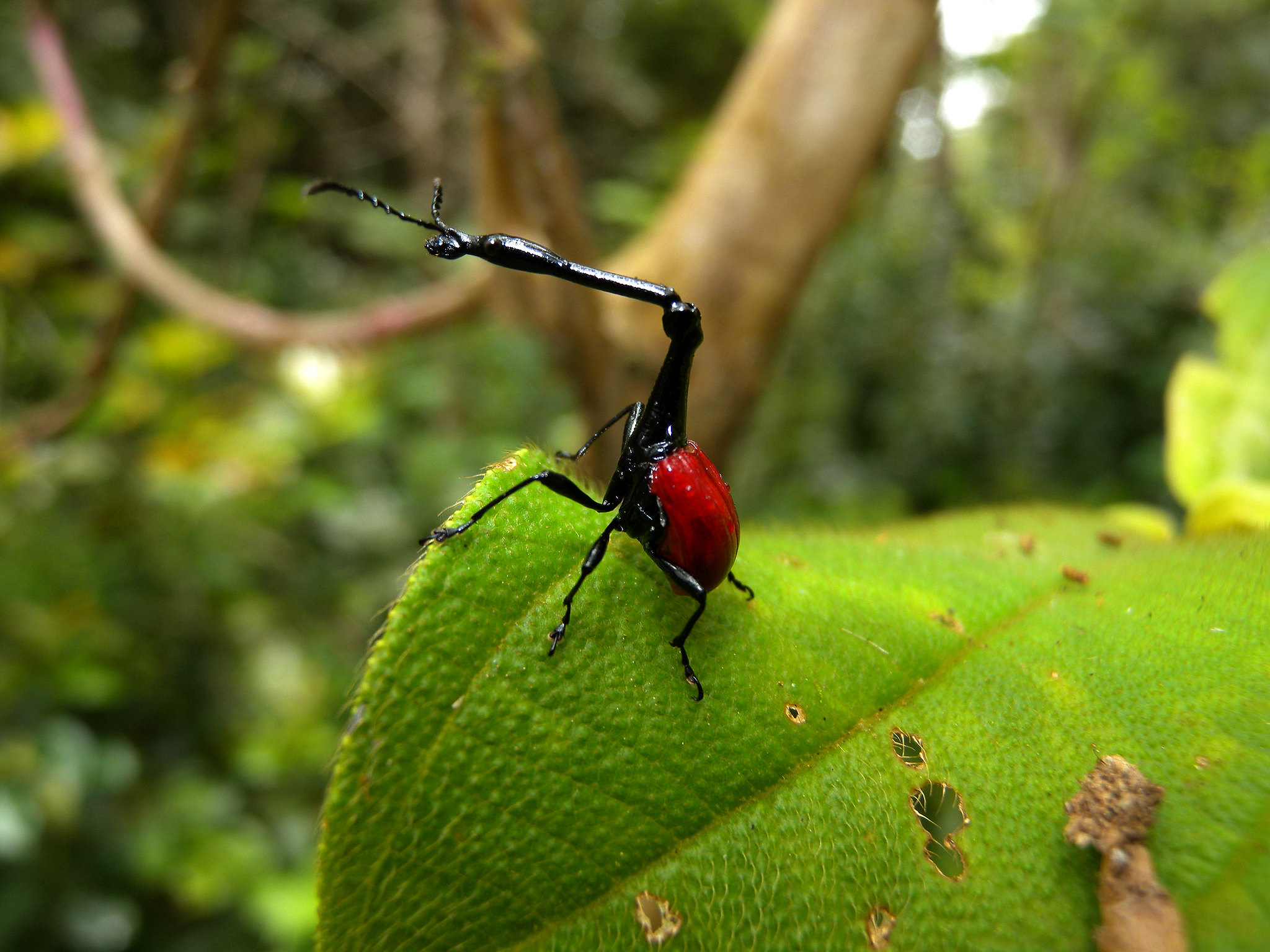
On Tuesday, Richard Fox, the Head of Science from Butterfly Conservation visited the Insect Ecology group. We attended talks given by members of the group on their research, and an interesting talk given by Richard Fox on the state of research on butterfly and moth conservation in the UK at this point in time, covering what we think, know and don’t know about insect decline. Ed and Andrew Bladon gave an overview of the work the group does in the tropics and in the UK, including the RERTA project and butterfly banks. Tiff spoke about her PhD on museum collections of the butterflies of Sulawesi and her plans for future work. Matt Hayes discussed his PhD, breaking down the fieldwork, lab work and museum collection aspects of his research.